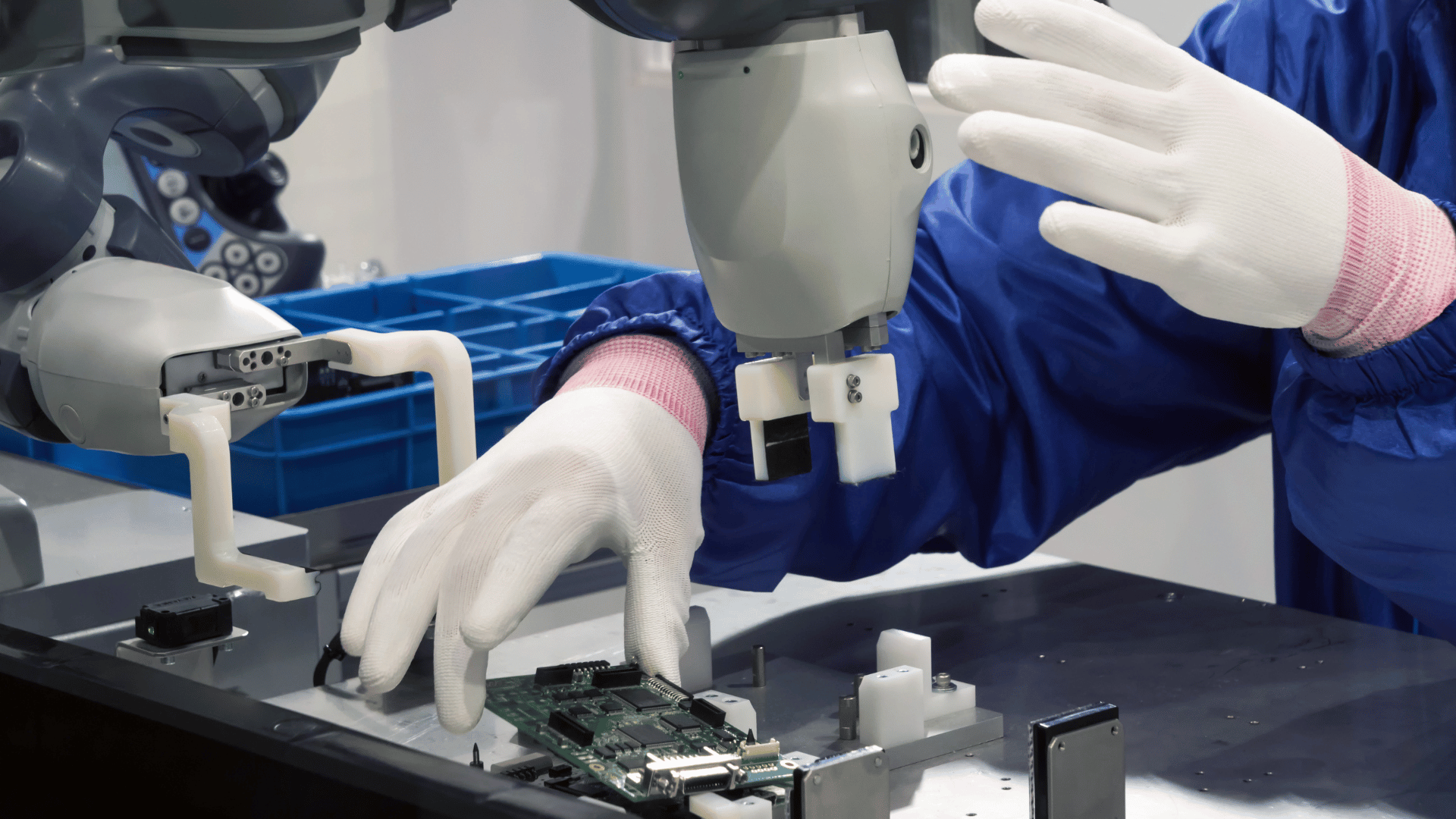Meet collaborative robots—the hot automation trend that is here to stay!
Industry 4.0 continues at full throttle, gaining new territory in coveted manufacturing spaces such as electronics. The pattern is distinctively perceptible in areas where enhanced automation is visibly present. The rise of collaborative robots, or "cobots" as they are called in the industry, at the front of assembly lines is a striking example of this story.
What are these collaborative robots?
Why are they so in demand?
How much more can they progress over the upcoming years?
These are intriguing questions for our field. So, it’s a wonderful opportunity to address them.
The rise of collaborative robots: Why manufacturers are embracing them
Cobots have become a predominant branch of the robotics family. These automated machines are specifically crafted with the sole purpose of working side-by-side with us, humans! They assist us in our work fields by learning and excelling at laborious tasks with high accuracy and productivity.
In manufacturing, cobots help human workers assemble products or parts, handle and sort materials, and perform quality checks and inspections.
Their capacity can be directly attributed to:
an easy-to-program design,
robust exterior, and
accessible human-machine interface (HMI).
Small and midsize companies have so much to gain from their deployment. They can be vehicles used to match large companies in terms of production and testing speed.
Over the past few years, industries of all sizes have added cobots to their processes
The ever-expanding list of companies with cobots extends across these segments:
retail,
life & sciences,
automotive,
metal,
plastics,
food and beverage,
packaging,
and, most recently, electronics.
Electronics, in particular, was a tough-to-get field because of the high technical level and small/micro-scale required to handle the pieces.
The overall results in every sector have been encouraging thus far, leading to meaningful optimizations beyond assembly lines, which more than justify the escalating market growth predicted to surpass the one billion frontiers by 2024.
Cobots are not multipurpose. They come in custom shapes and sizes
Through their design, cobots aim to achieve specific targets that are measurable in terms of power, speed, and precision. Through a fixed configuration, they carry out tedious and repetitive tasks in a process, leaving humans to focus on the core chores that ask for deep thinking instead of physicality. In consequence, the operator or engineer gains much-needed time to enhance operations.
Speaking of operations, cobots are friendly in deployment, safe to use, and easy to work with. Teams become literate in their technology within the first three months of work or less, in most cases.
The fields of application vary. Still, some of the frequent tasks they perform are:
welding,
packaging and palletizing,
assembling and handling materials,
quality inspections, and
dispensing.
The companies deploying cobots are seeing positive benefits in just a few months
In an exciting success story, KOYO ELECTRONICS INDUSTRIES, a company that makes touch panels for cars, was able to overcome production and post-production bottlenecks plagued by labor shortages. They did it by investing in the Universal Robots UR3 cobot, a decision that led them to raise productivity by 31%.
ABB is a renowned robotics expert and user of the technology. In their plant in New Berlin, WI, they implanted a YuMi cobot to test and assemble variable-frequency drives (VFDs). The addition of a cobot allowed ABB to speed up quality checks. During testing, the cobot unfastens 27 screws to release a test plate. Before the cobot, the same operator was in charge of recording the drive’s model and writing down all the data by himself during the post-processing testing stage. In all instances, it was a hard and time-consuming job to undertake shift after shift. Since bringing the cobot in, the task only requires 2.5 minutes. Or 5.6 seconds per screw! With this accelerated performance, ABB was in a position to meet the growing demand for their drives when compared to the former manual process. Learn more details about this success story here.
The embracement of cobot technology by the electronics segment is good for business
The industry alone occupied 35% of the market in 2018. Simply put, the electronics sector is taking advantage of what cobots have to offer to polish its processes in times of high demand. And why wouldn’t it when collaborative robots have proven to be beneficial devices for their operations and come at an affordable price that ranks lower than other products in their line?
At assembly, cobots can perform many functions, from picking and handling components to securing them onto the corresponding printed circuit boards, just to give an example.
Built into the efficient design are high-performance sensors that can reject bad parts with high accuracy, speed up production, and cut down on mistakes. By the way, all that is done at an incredibly fast speed that humans cannot match.
The demand for cobots is not slowing down anytime soon
People are just starting to get a taste of what cobots can do for them. The good return on investment (ROI) and easy integration into existing processes will only increase the demand for them across all industrial segments.
Over the next decade, I foresee a boost in usage within small- to mid-scale industries. In their spaces, cobots can make a great difference by elevating efficiency, productivity, and profitability. Even more in times of labor shortages.
Cobot adoption doesn’t come without challenges. The automation industry must set up a next generation of collaborative robots that improve sustainability and raise competitiveness. Both are necessary to drive the stakes further.
Install a Cobot with our support
Are you interested in enhancing your operations with a cobot or need related consulting for your decision making process?
Verdusco Consulting has the automation engineers and technical consultants to help you get the job done.
Contact us now and install the right cobot solution for your plant and process.
Until next time,
I’m Raul Verdusco, signing off.




